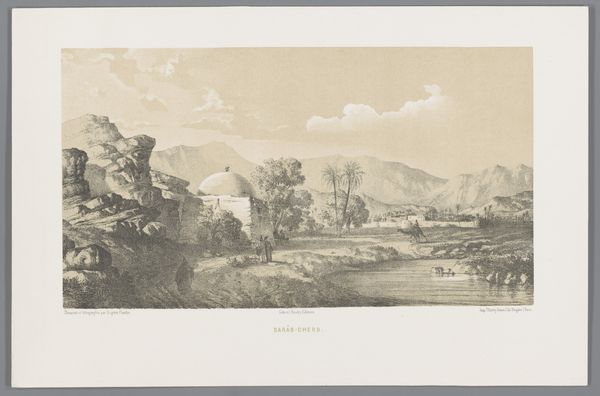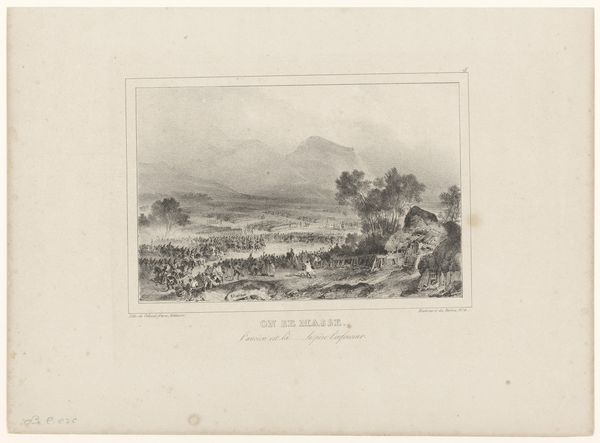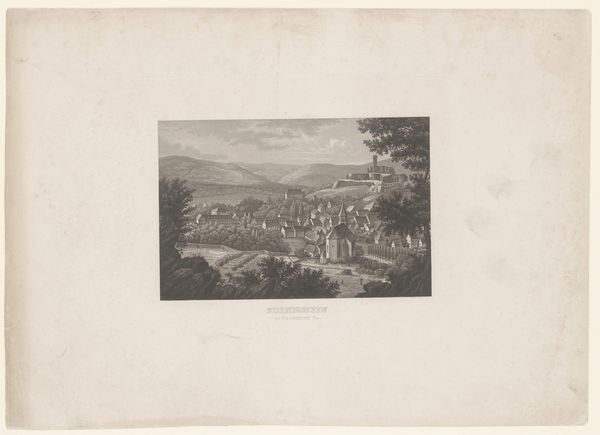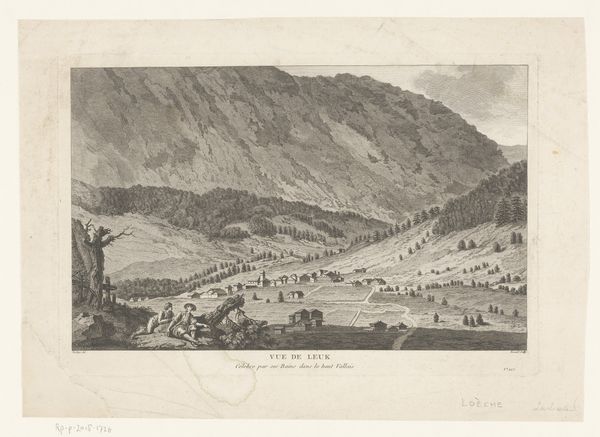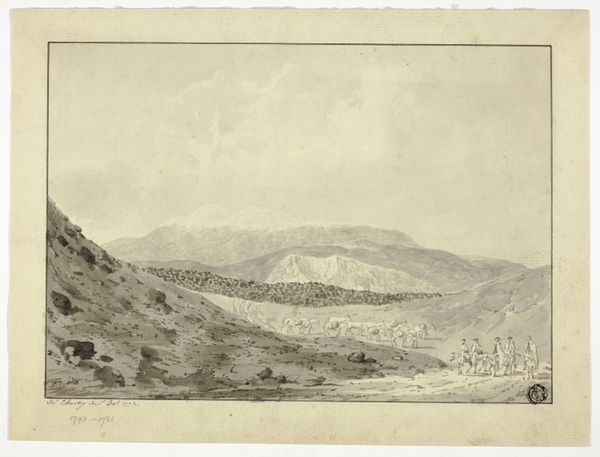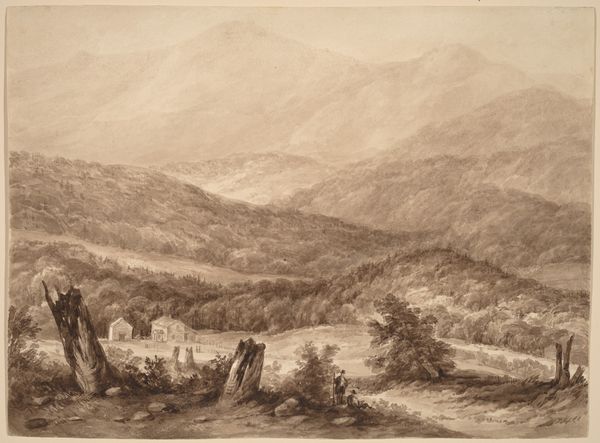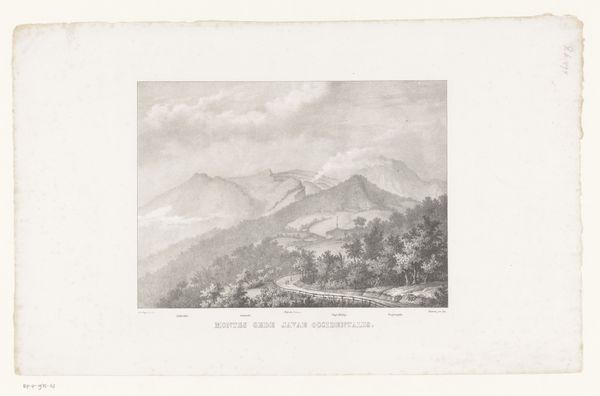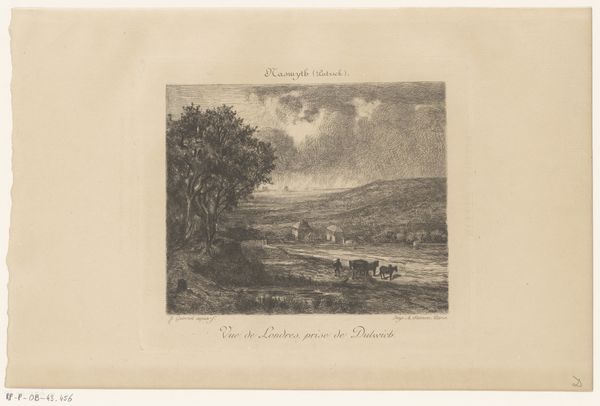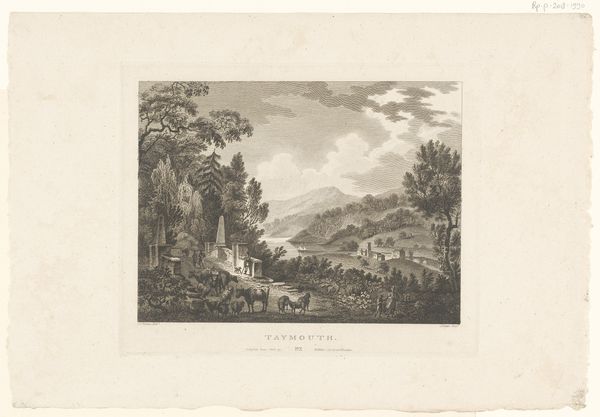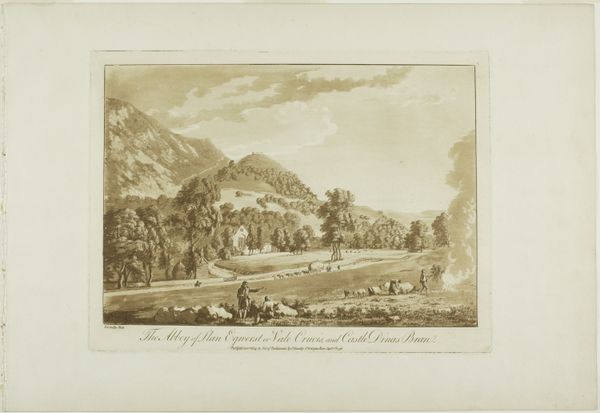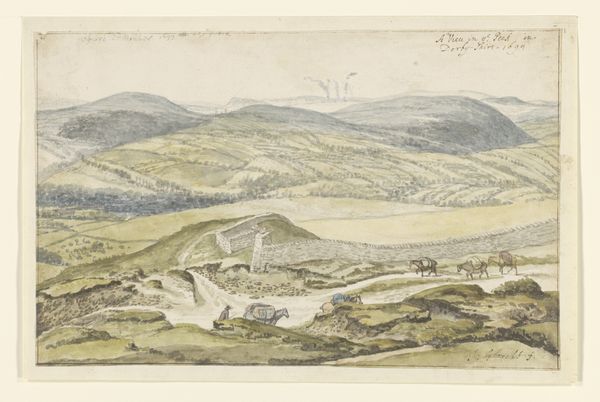
drawing, ink
#
drawing
#
landscape
#
ink
#
orientalism
Dimensions: height 499 mm, width 797 mm
Copyright: Rijks Museum: Open Domain
Editor: We’re looking at "Gezicht op Smyrna," a landscape drawing created between 1850 and 1874, using ink. The detail is incredible. The artist really captured a serene, almost timeless quality. What stands out to you from a formalist perspective? Curator: The artist’s strategic manipulation of light and shadow immediately commands attention. Observe how the contrasting values guide the eye from the darkened foreground figures to the sun-drenched plains, culminating in the almost ethereal mountain range. Editor: It's like a gradient. Are there other compositional elements at work? Curator: Indeed. The composition employs a tripartite structure. The lower register establishes a grounding presence; the middle register offers perspectival depth via a network of interwoven vegetation; and the upper register culminates in a succession of imposing, silhouetted mountain peaks. Ask yourself, what is the effect of the layering and subtle tonal variations in creating a sense of receding space? Editor: It definitely amplifies the vastness and scale of the landscape, and makes you want to follow the path with the camels. But why did the artist decide on these choices? Curator: Let us focus on what is self-contained in the work, rather than projecting our interpretation outwards. Observe closely how the artist uses line and form. Notice the contrasting textures: the soft, blurred lines used for the distant mountains versus the sharper, more defined strokes that detail the architecture. Does that contrast introduce some tension? Editor: Now I see it, how different areas are emphasized. So it’s not about what I initially thought about the landscape, but the techniques used. It's really helpful to think of the art itself speaking first. Curator: Precisely. Analyzing the artwork using line, shape, and texture unlocks visual qualities and informs our appreciation.
Comments
No comments
Be the first to comment and join the conversation on the ultimate creative platform.
